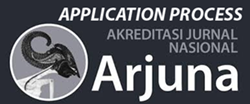Navigating the Pedagogical Landscape: An In-Depth Review of the Educational Atmosphere in College Settings
DOI:
https://doi.org/10.59653/jemls.v2i02.635Keywords:
Educational Atmosphere, Campus Culture, Learning Environment, Student Experiences, Institutional PoliciesAbstract
This comprehensive review paper delves into the multifaceted dimensions of the educational atmosphere in college environments. Drawing on a wide range of scholarly perspectives, we explore the various factors that contribute to shaping the learning environment within higher education institutions. From pedagogical approaches to institutional policies, campus culture, and student experiences, this paper aims to provide a holistic understanding of the complex dynamics that define the educational atmosphere in colleges. By synthesizing current research findings, identifying key trends, and highlighting challenges and opportunities, our review seeks to inform educators, administrators, and policymakers in fostering a positive and enriching learning environment for students in higher education.
Downloads
References
Adsitt, N. Z. (2017). Stretching the circle: First-generation college students navigate their educational journey (Doctoral dissertation, Syracuse University).
Bernard, C. F. (2015). Ensemble educators, administrators, and evaluation: Support, survival, and navigating change in a high-stakes environment (Doctoral dissertation, Teachers College, Columbia University).
Britain, S., & Liber, O. (2004). A framework for pedagogical evaluation of virtual learning environments.
Chiang, F. K., Zhu, D., & Yu, W. (2022). A systematic review of academic dishonesty in online learning environments. Journal of Computer Assisted Learning, 38(4), 907-928.
Eslit, E. R. (2023). Elevating language acquisition through deep learning and meaningful pedagogy in an AI-evolving educational landscape.
Gao, T. (2003). The effects of different levels of interaction on the achievement and motivational perceptions of college students in a web-based learning environment. Journal of Interactive Learning Research, 14(4), 367-386.
Haines, D. J., & Fortman, T. (2008). The college recreational sports learning environment. Recreational Sports Journal, 32(1), 52-61.
Johanes, P., & Lagerstrom, L. (2017, June). Adaptive learning: The premise, promise, and pitfalls. In 2017 ASEE Annual Conference & Exposition.
McCallen, L. S., & Johnson, H. L. (2020). The role of institutional agents in promoting higher education success among first-generation college students at a public urban university. Journal of Diversity in Higher Education, 13(4), 320.
Papaioannou, G., Volakaki, M. G., Kokolakis, S., & Vouyioukas, D. (2023). Learning spaces in higher education: a state-of-the-art review. Trends in Higher Education, 2(3), 526-545.
Park, E. L., & Choi, B. K. (2014). Transformation of classroom spaces: Traditional versus active learning classroom in colleges. Higher Education, 68, 749-771
Ratliff, V. (2009). Are college students prepared for a technology-rich learning environment. Journal of Online Learning and Teaching, 5(4), 698-702.
Reichart, B., & Elvidge, C. (2015). Information literacy in the changing landscape of distance learning: The collaborative design of a flexible, digital, asynchronous course. Pennsylvania Libraries: Research & Practice, 3(2), 144-155.
Savvidou, C. (2011). Exploring teachers' narratives of inclusive practice in higher education. Teacher Development, 15(1), 53-67.
Schönrock-Adema, J., Bouwkamp-Timmer, T., van Hell, E. A., & Cohen-Schotanus, J. (2012). Key elements in assessing the educational environment: where is the theory?. Advances in Health Sciences Education, 17, 727-742.
Selwyn, N. (2007, October). Web 2.0 applications as alternative environments for informal learning-a critical review. In Paper for CERI-KERIS international expert meeting on ICT and educational performance (Vol. 16, No. 17, pp. 1-10).
Downloads
Published
How to Cite
Issue
Section
License
Copyright (c) 2024 Chandrasekhar Bhoi

This work is licensed under a Creative Commons Attribution-ShareAlike 4.0 International License.
Authors who publish with this journal agree to the following terms:
- Authors retain copyright and grant the journal right of first publication with the work simultaneously licensed under a Creative Commons Attribution-ShareAlike that allows others to share the work with an acknowledgement of the work's authorship and initial publication in this journal.
- Authors are able to enter into separate, additional contractual arrangements for the non-exclusive distribution of the journal's published version of the work (e.g., post it to an institutional repository or publish it in a book), with an acknowledgement of its initial publication in this journal.
- Authors are permitted and encouraged to post their work online (e.g., in institutional repositories or on their website) prior to and during the submission process, as it can lead to productive exchanges, as well as earlier and greater citation of published work (See The Effect of Open Access).
























